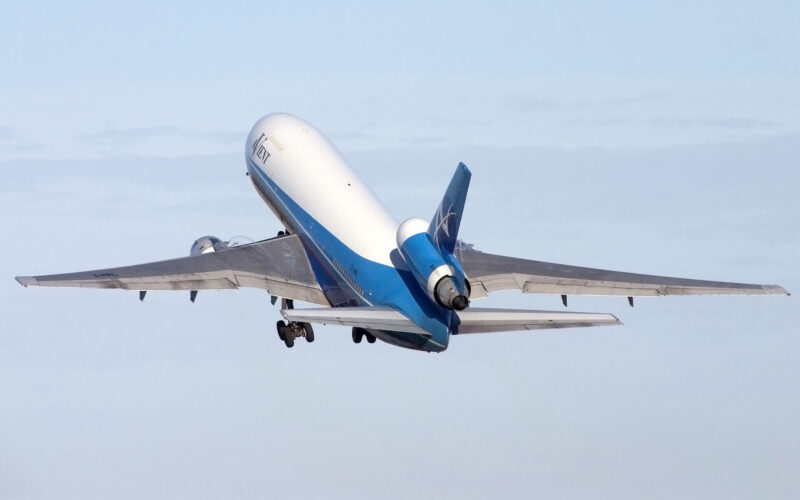The 1970s were truly a magical time, as multiple manufacturers competed for their chance in the spotlight. Jet-powered aircraft were jumping leaps and bounds in terms of capabilities and performance. Not only we saw the introduction of such aircraft like the Boeing 747 or the Lockheed L-1011, but also the supersonic transports (SSTs) Concorde and the Tupolev Tu-144. But one aircraft, which flew its first passengers in the 70s, did enjoy a particular spotlight. Unfortunately, for the McDonnell Douglas DC-10, it flourished in a spotlight that did not portray the trijet in a bright and positive way.
But did its reputation bring it down, as airlines were not very keen to order it after the Federal Aviation Administration (FAA) temporarily withdrew its type certificate in the summer of 1979? Or was it a victim of circumstance and competition?
Stained DC-10 reputation
Throughout more than a century of commercial aviation, only a handful of aircraft had their type certificates withdrawn by the FAA. The Boeing 737 MAX, Boeing 787 Dreamliner, Concorde, de Havilland Comet are some of the jets that were grounded, without including the DC-10. While the Dreamliner has enjoyed a successful career so far, the same could not be said about the Concorde, the Comet or the DC-10. The final chapter of the 737 MAX’s career is still to be written, as authorities worldwide have not approved the narrow-body to operate commercial flights just yet.
The Comet and DC-10 seemingly have a striking resemblance in their stories. Both suffered a multitude of crashes when air safety was just starting to mature. Both were grounded by worldwide authorities in order to make design changes, as they deemed certain parts of the aircraft not being able to ensure passenger safety. The de Havilland jet, the first of its kind, had showcased the same weakness – the aircraft fuselage could not handle pressurization cycles and thus would start to crack.
The DC-10’s reputational problems stemmed from its cargo door-related accidents. If it was not properly closed, its latch mechanism would end up in the incorrect position and subsequently blow out due to the difference of air pressure in the cabin and outside of it. Two high-profile crashes happened due to fault, namely American Airlines (A1G) (AAL) flight 96 and Turkish Airlines flight 981 ‒ the latter being one of the deadliest crashes in history.
The FAA’s decision to revoke the trijet‘s type certificate came after an American Airlines DC-10, operating flight 191, lost its engine immediately after take-off from Chicago O’Hare International Airport (ORD), rather after a cargo door-related incident. The left-hand engine, including its pylon assembly, parted ways with the aircraft, hitting electrical and hydraulic lines. According to the FAA, the separation of the engine resulted in the loss of “captain’s flight instruments, the left stall warning computer, the stick shaker motor, number 1 engine instruments, the slat disagree warning system, and parts of the flight control indicating system.”
That is not to undermine the significance of the investigation into AA flight 191, as the administration found nine additional DC-10s with cracks in their engine pylon mounts – but the aircraft’s reputation in the eyes of the general public was shattered. The image of a DC-10, banking heavily to the left at O’Hare International Airport (ORD), coinciding with the previous two fatal crashes seemingly did it for the aircraft.
Up until 1978, airlines ordered 350 McDonnell Douglas wide-bodies. After 1979, the number dropped to 77. The number of orders and deliveries did not quite match up – the U.S. manufacturer delivered a total of 386 units, excluding 60 aircraft delivered as the KC-10 tanker, while it amassed a total of 427 orders. Numbers, provided by Boeing, which merged with McDonnell Douglas, showcase just how much the DC-10 tanked in popularity amongst its customers.
Competition from Airbus and Boeing
Was the DC-10 just bound to be phased out eventually, though?
After all, the 1970s saw the introduction of the Airbus A300, which offered much better operating economics by utilizing two instead of three engines. Boeing announced the 767, another twin-engine wide-body, in 1978, briefly before the DC-10 was grounded. At the same time, the DC-10 had to compete with two other wide-bodies, the L-1011 and the Boeing 747. International travel was not as popular as it is right now and the competition was tight. In addition, the 1970s saw two energy crises, when oil prices shot up massively, putting further pressure on a consumer’s ability to spend money on flights. Airline costs, naturally, followed the spike in oil prices, and minimizing the number of engines on an aircraft does help in minimizing costs.
McDonnell Douglas did not give up on the trijet dream, though. The MD-11, a derivative of the DC-10, saw its first passengers in 1991, reads Boeing’s history of the aircraft. The last wide-body of McDonnell Douglas saw little popularity and did not help in saving the company, which merged with Boeing in 1997.

